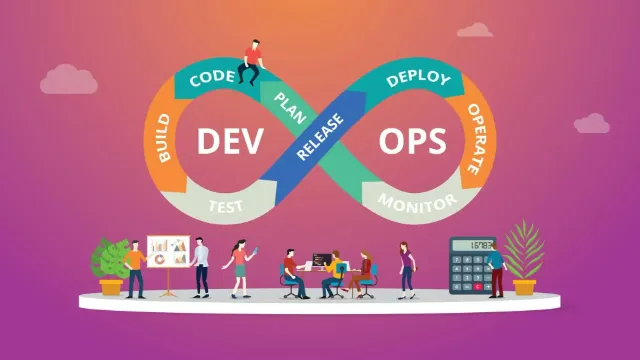10 Common Offshore Software Development Challenges

Introduction
Imagine building a magnificent ship, but navigating uncharted waters filled with hidden shipwrecks. Offshore software development offers a vast ocean of talent and cost-effectiveness but also harbors potential pitfalls.
Do not allow these difficulties to ruin your project. This blog post will serve as your lighthouse, helping you to navigate ten typical roadblocks that you may run into when collaborating with an offshore team. We will help you overcome these obstacles and make sure your software development project is completed successfully.
Is offshore development right for you?
In the fiercely competitive business world of today, organizations are always looking for creative ways to cut expenses and get access to elite talent. Developing software remotely has become a very attractive way to accomplish these objectives. Businesses can benefit from a larger talent pool and possibly lower development costs by collaborating with development teams abroad.
However, navigating the world of offshore software development isn’t without its challenges. It is essential to comprehend these obstacles and know how to get beyond them in order to guarantee project success. Ten typical issues that arise when working with an offshore team will be covered in this blog post, along with workable fixes to help you reduce risks and meet your development objectives.
Offshore Software Development Challenges and Solutions
To make the best of offshore software development, you must overcome the ten most typical obstacles listed below, along with some possible solutions.
Also Read: What Are The Significant Aspects To Look For While Hiring A Software Development Company?
Communication and Collaboration Challenges:
Working together and maintaining communication with an offshore team can feel like traveling through a foreign country. Time zone variations, cultural differences, and language barriers are typical roadblocks that, if not handled properly, can cause your project to fail.
Language barriers
Overcoming the language barrier is among the biggest obstacles. Misunderstandings brought on by accents, technical terms, or even seemingly straightforward idioms can result in lost time. Envision a costly setback where a crucial feature is developed based on a misconstrued requirement.
Solution: To Smooth Communication
Standardization is essential to ensuring effective communication. Confusion can be reduced by requiring all project documentation, from technical specifications to initial requirements, to be written in clear and simple English. Although real-time communication can be facilitated by online translation tools, it is important to confirm their accuracy, particularly when dealing with technical terms.
Cultural differences
Cultural norms possess a dual nature. Failing to recognize and acknowledge cultural differences can result in frustration and miscommunication, even though it promotes a more positive and courteous working relationship. For example, direct communication methods that are typical in some cultures may be viewed as hostile in others.
Solution: Cultural Awareness Training
It makes sense to invest in cultural sensitivity training for your offshore team as well as your internal team. Gaining insight into cultural norms pertaining to communication styles, work ethics, and decision-making procedures can help you forge stronger connections and more skillfully negotiate possible obstacles.
Also Read: 7 software development trends to follow
Time zone differences
Significant time zone differences can make it difficult to communicate in real time and make decisions quickly. Imagine that because of the time difference, your offshore development team is unavailable when you need a crucial clarification on a snippet of code.
Solution: Scheduling
It is crucial to schedule strategically. Establish designated periods of time during the day when both teams can work well together. It is essential to use project management software and communication tools that support information sharing and asynchronous communication. This enables team members to ask questions, offer feedback, and remain informed about the status of the project even when they are not working on it concurrently.
Project Management Challenges:
Even the most experienced captain can find it difficult, without a crew that is well-trained. To avoid common pitfalls in offshore software development, such as unclear goals, inconsistent processes, and hidden costs that result in unanticipated delays, it is imperative to ensure smooth project management.
Unclear project goals and expectations
An unclear destination when sailing is a surefire way to go wrong. Poorly defined project goals and functionalities can cause serious problems in the future when it comes to offshore software development. Just picture how frustrating it would be to receive a finished product that does not live up to your original expectations due to unclear requirements.
Solution: Proper Planning
Take the time to plan the project thoroughly in advance to make sure that everyone is in agreement. This entails setting SMART (specific, measurable, achievable, and realistic) goals for the project. Wireframes, functional specifications, and detailed user stories are all essential for creating a common understanding of the project’s features and scope.
Lack of process discipline
Just like a ship needs a skilled crew to navigate effectively, a software development project requires well-defined processes. Inconsistent development processes or a lack of established methodologies can lead to errors, inefficiencies, and ultimately, project delays.
Solutions: Robust Project Management
Establishing a strong project management methodology—such as Waterfall or Agile—offers a well-defined structure for development. To track changes and guarantee code quality, entails defining precise roles and responsibilities, carrying out frequent code reviews, and deploying version control systems.
Hidden costs and unexpected delays
Unexpected expenses and delays have the potential to ruin your project’s budget and schedule like undiscovered reefs. These may result from things like underestimating the amount of communication overhead, complicated integrations, or the requirement for extra functionalities that were not originally anticipated.
Solutions:
Make careful cost estimates up front, accounting for possible integration and communication difficulties, to steer clear of such pitfalls. Throughout the project, communicate with your offshore development partner in an open and transparent manner. Frequent milestone reviews and progress reports assist in identifying possible hazards and correcting courses before they become significant obstacles.
Also Read: 7 Ways AI is Transforming Custom Enterprise Software
Quality and Security Challenges:
Any software development project must maintain strong security measures and excellent code quality. However, offshore development introduces additional considerations.
Quality control issues
It can be difficult to maintain consistent code quality across continents. Consider how frustrating it would be to deploy software that is packed with bugs for both you and your end users.
Solutions: Ensure top-notch code quality
Establish explicit quality assurance (QA) procedures from the beginning to guarantee excellent code quality. To find and address bugs early in the development process, this involves conducting routine code reviews, unit tests, and integration tests. The QA process can be further streamlined by putting automated testing tools into place.
Data security and intellectual property (IP) concerns
Theft of intellectual property and data breaches are the two main security issues in offshore development. Imagine your proprietary ideas or sensitive user data getting into the wrong hands.
Solution: Non-disclosure agreements (NDAs)
It takes multiple strategies to mitigate these risks. Watertight security protocols, including encryption of sensitive data and secure access controls, are essential. Furthermore, ironclad non-disclosure agreements (NDAs) are crucial to protect your intellectual property.
Limited talent pool
Locating developers with the specialized skill sets required for your project may be difficult, depending on the offshore location. Assume that you require expertise in a particular technology and that the offshore partner you have chosen lacks qualified developers on their team.
Solutions: Carefully choose the partner
It is crucial to choose a partner carefully. Make sure your offshore development partner has a successful track record and that their talent pool aligns with the specific needs of your project by conducting thorough due diligence. Make use of their local talent acquisition experience.
Poor code quality
Because offshore development is more affordable, it is often preferred; however, concerns regarding the code’s quality do not go away. Imagine inheriting poorly written code that will be difficult to modify and update in the future.
Solutions: Clear coding standards and best practices
Clear coding standards and best practices must be the main focus of any solution to this. Ensuring high-quality code can be greatly enhanced by collaborating with an offshore development team that prioritizes code maintainability and makes use of code review procedures.
Conclusion
Navigating the world of offshore software development successfully requires careful planning, honest communication, and a strong working relationship with your chosen offshore software development company. If you can identify the potential issues this blog post covers and implement the suggested solutions, you can significantly increase the likelihood that your project will succeed.
Remember, a reputable offshore software development company will be transparent in its communication, prioritize clear project requirements, and have robust security measures in place. They will also have a proven track record of working with clients like you to deliver high-quality software solutions that meet your specific business needs.
Depending on how carefully you choose your offshore partner, your project may go smoothly and successfully or it may be a frustrating one. By carefully considering these factors, you can fully reap the benefits of offshore development and propel your business forward with innovative and reasonably priced software solutions.






